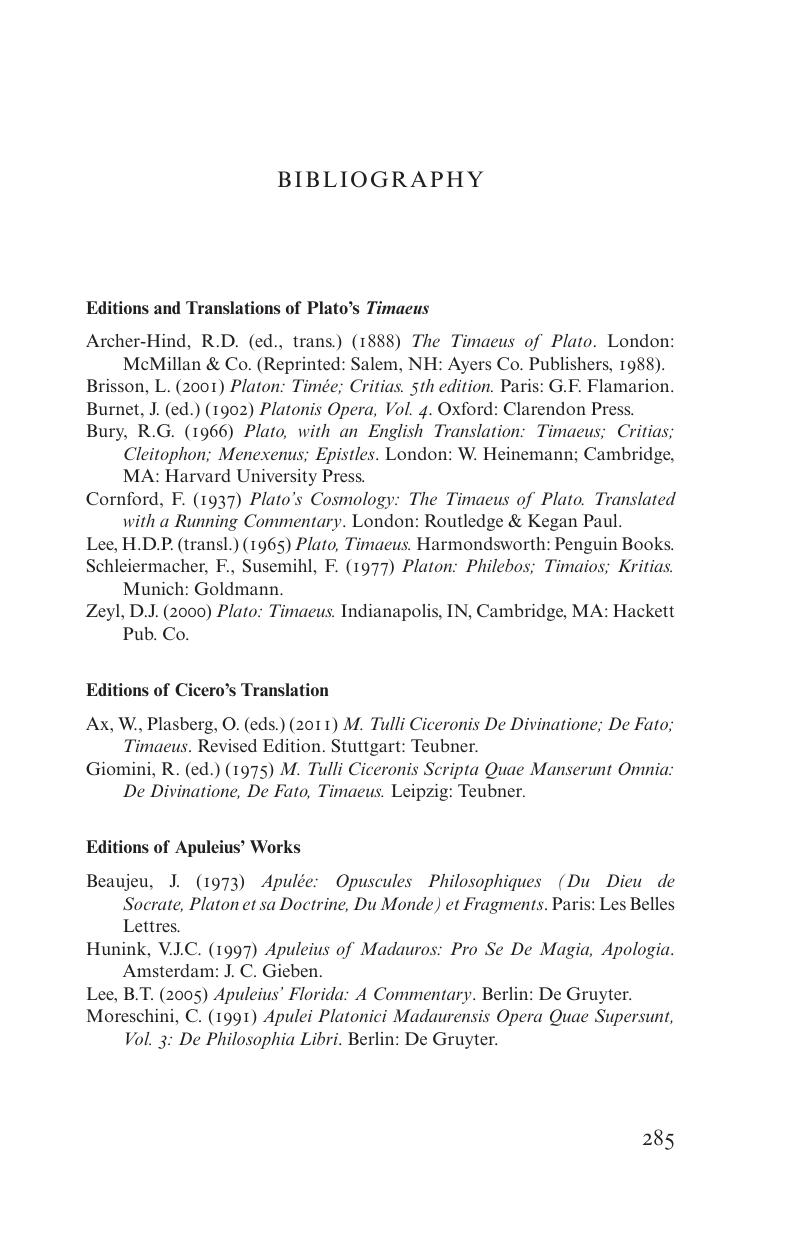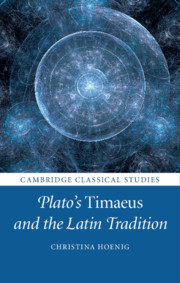Book contents
- Plato’s Timaeus and the Latin Tradition
- Cambridge Classical Studies
- Plato’s Timaeus and the Latin Tradition
- Copyright page
- Contents
- Tables
- Acknowledgements
- Abbreviations
- Introduction
- Chapter 1 The Setting: Plato’s Timaeus
- Chapter 2 Cicero
- Chapter 3 Apuleius
- Chapter 4 Calcidius
- Chapter 5 Augustine
- Conclusion
- Bibliography
- Index Verborum Graecorum
- Index Verborum Latinorum
- Index Locorum
- Subject Index
- References
Bibliography
Published online by Cambridge University Press: 23 July 2018
- Plato’s Timaeus and the Latin Tradition
- Cambridge Classical Studies
- Plato’s Timaeus and the Latin Tradition
- Copyright page
- Contents
- Tables
- Acknowledgements
- Abbreviations
- Introduction
- Chapter 1 The Setting: Plato’s Timaeus
- Chapter 2 Cicero
- Chapter 3 Apuleius
- Chapter 4 Calcidius
- Chapter 5 Augustine
- Conclusion
- Bibliography
- Index Verborum Graecorum
- Index Verborum Latinorum
- Index Locorum
- Subject Index
- References
Summary

- Type
- Chapter
- Information
- Plato's Timaeus and the Latin Tradition , pp. 285 - 304Publisher: Cambridge University PressPrint publication year: 2018



